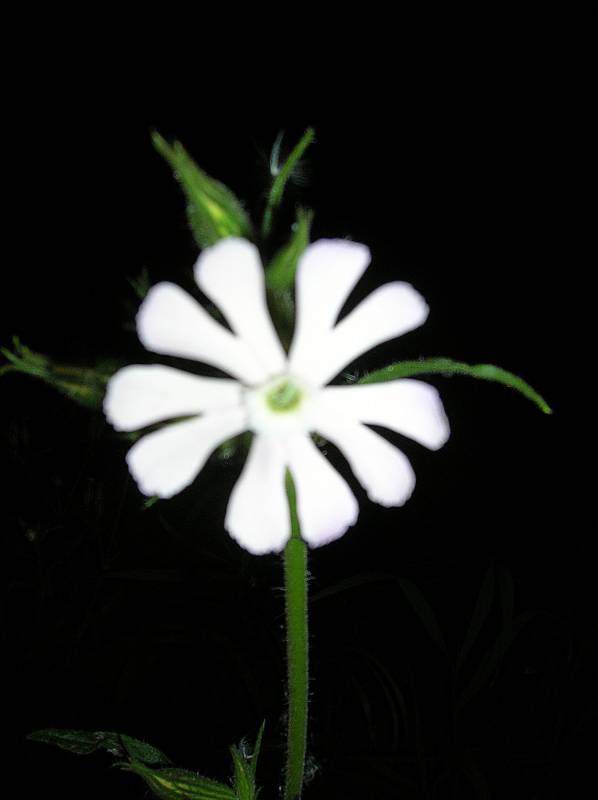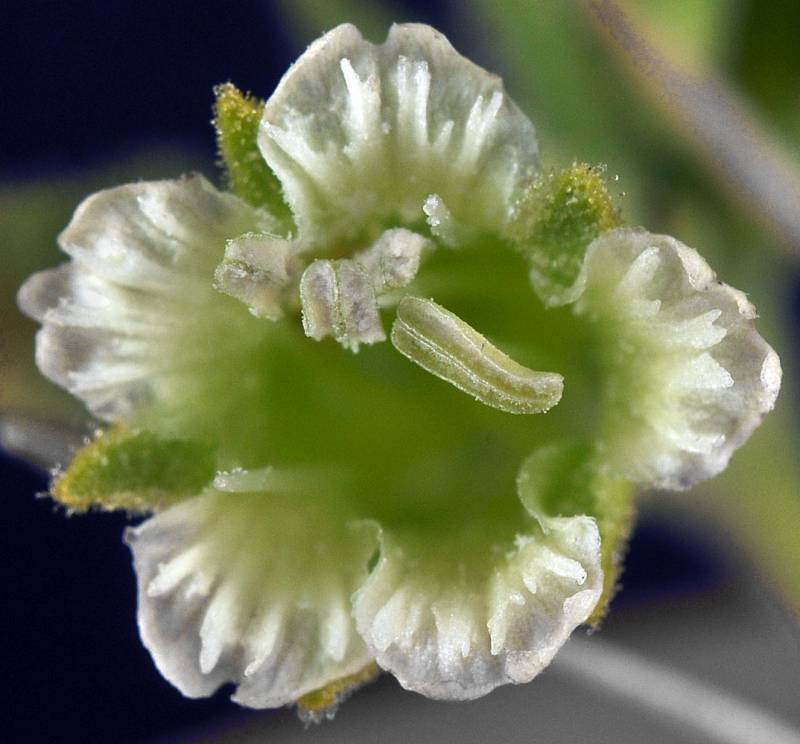Silene noctiflora
Silene spaldingii
night-flowering catchfly
Spalding's catchfly, Spalding's silene
Leaves opposite, ovate-lanceolate to elliptic-oblanceolate, 5-12 cm. long and up to 4 cm. broad, the lower ones long-petiolate, the upper sub-sessile.
Cauline leaves 5-7 pairs, oblanceolate below and lanceolate above, 6-7 cm. long and 5-15 mm. broad, sessile.
Flowers few to several in an open inflorescence, the pedicels 3-30 mm. long;
calyx 5u00e2u20acu201clobed, tubular, 15 mm. long at flowering, much enlarged in fruit, 10-nerved, the lobes lance-linear, 5-9 mm. long;
petals 5, white to pinkish, glabrous, the claw 12-25 mm. long, auriculate above, the blade 7-10 mm. long, bi-lobed less than half the length;
blade appendages 2, 0.5-1.5 mm. long and broad;
stamens 10;
styles 3. Flowers open at dusk.
Flowers several to many in a leafy, compact inflorescence;
calyx 5-lobed, tubular, about 15 mm. long, 10-nerved;
petals 5, white, the claw about 15 mm. long and the blade 2 mm. long, ovate, entire; appendages four, 0.5 mm. long;
stamens 10;
styles 3.
Capsule 3-celled.
Capsule 1-celled.
Silene noctiflora
Silene spaldingii
- Local floras:
BC,
CA,
OR,
WA
- Local Web sites:
CalFlora,
CalPhotos,
Flora NW,
PNW Herbaria
WildflowerSearch
iNaturalist (observations)
USDA Plants Database
- LBJ Wildflower Center
- SEINet
- Plants of the World Online
- Encyclopedia of Life
- Wikipedia
- Google Image Search
- Local floras:
BC,
OR,
WA
- Local Web sites:
Flora NW,
PNW Herbaria
WildflowerSearch
iNaturalist (observations)
USDA Plants Database
- LBJ Wildflower Center
- SEINet
- Plants of the World Online
- Encyclopedia of Life
- Wikipedia
- Google Image Search



